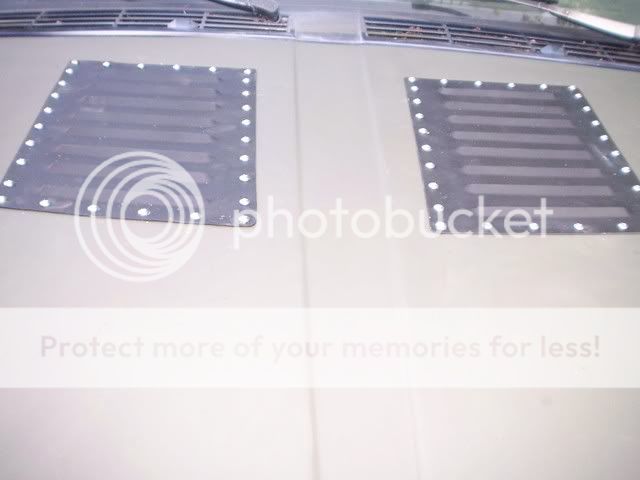Stumpalump
NAXJA Forum User
- Location
- Franktown Co.
I worked on my hood today and it came out nice so I thought I'd pass it on.
I spaced the hood a ways back with longer bolts and washers but never liked the looks or how little air space it created. Today riped the rear hood gasket off and beat down the metal gasket flange the rest of the way down to let more air thru. Still not much air so I opened the hood and put a 2"X6" dead center of the rear of the hood and balanced it on the cowl. As I slowly let the hood down it bowed the hood up to increase air flow. Yea, you can crack the fiberglass cowl so I went easy. This opened up the gap real nice and looks stock. The side profile still looked goofy with the sides of the hood jacked up so I stood on the nerf bars and leaned down hard on the rear corners. This bowed the rear corners down and closed the goffy gap about half of what I had. Now that it lets a lot of air thru and looks half decent I think it's a great cheap way to let it breath.
I spaced the hood a ways back with longer bolts and washers but never liked the looks or how little air space it created. Today riped the rear hood gasket off and beat down the metal gasket flange the rest of the way down to let more air thru. Still not much air so I opened the hood and put a 2"X6" dead center of the rear of the hood and balanced it on the cowl. As I slowly let the hood down it bowed the hood up to increase air flow. Yea, you can crack the fiberglass cowl so I went easy. This opened up the gap real nice and looks stock. The side profile still looked goofy with the sides of the hood jacked up so I stood on the nerf bars and leaned down hard on the rear corners. This bowed the rear corners down and closed the goffy gap about half of what I had. Now that it lets a lot of air thru and looks half decent I think it's a great cheap way to let it breath.







